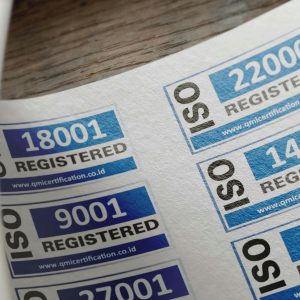SOC 2 Gap Analysis: Master ISO Certification Effortlessly
In today’s digital landscape, SOC 2 gap analysis has emerged as a critical tool for organizations aiming to achieve ISO certification seamlessly. As businesses increasingly rely on SaaS platforms and cloud-based solutions, ensuring compliance with industry standards like SOC 2 and ISO 27001 is no longer optional—it’s a necessity. A SOC 2 gap analysis helps organizations identify areas of non-compliance, streamline their processes, and pave the way for ISO certification with minimal friction.
This article delves into the intricacies of SOC 2 gap analysis, its role in achieving ISO certification, and actionable steps to master the process effortlessly. Whether you’re a compliance officer, cybersecurity manager, or SaaS founder, this guide will equip you with the knowledge to navigate the complexities of digital trust and certification.
—
What is SOC 2 Gap Analysis?

A SOC 2 gap analysis is a systematic assessment that compares an organization’s current security controls and practices against the SOC 2 Trust Services Criteria (TSC). The SOC 2 framework, developed by the American Institute of CPAs (AICPA), focuses on five key principles:
1. Security
2. Availability
3. Processing Integrity
4. Confidentiality
5. Privacy
The primary goal of a SOC 2 gap analysis is to identify discrepancies between your existing controls and the SOC 2 requirements. This process helps organizations pinpoint vulnerabilities, implement corrective measures, and prepare for a successful SOC 2 audit.
—
Why SOC 2 Gap Analysis is Crucial for ISO Certification
While SOC 2 and ISO 27001 are distinct frameworks, they share overlapping objectives, particularly in the realm of information security. Conducting a SOC 2 gap analysis can significantly ease the path to ISO certification by:
– Identifying Common Requirements: Both frameworks emphasize robust security controls, risk management, and continuous improvement. A SOC 2 gap analysis helps you address these areas early on.
– Reducing Redundancy: Many of the controls implemented for SOC 2 compliance can be leveraged for ISO 27001 certification, saving time and resources.
– Enhancing Credibility: Achieving SOC 2 compliance demonstrates your commitment to security, which strengthens your case for ISO certification.
—
Steps to Conduct a SOC 2 Gap Analysis
Mastering the SOC 2 gap analysis process requires a structured approach. Below is a step-by-step guide to help you navigate this critical phase:
1. Define the Scope
Clearly outline the systems, processes, and data that fall within the scope of your SOC 2 assessment. This step ensures that your analysis is focused and comprehensive.
2. Gather Documentation
Collect existing policies, procedures, and control documentation. This includes incident response plans, access control policies, and risk assessments.
3. Assess Current Controls
Evaluate your current security controls against the SOC 2 Trust Services Criteria. Identify gaps where your practices fall short of the requirements.
4. Prioritize Remediation
Classify the identified gaps based on their severity and impact. Focus on addressing high-risk areas first to ensure maximum security improvement.
5. Implement Corrective Measures
Develop and deploy action plans to rectify the gaps. This may involve updating policies, enhancing technical controls, or training employees.
6. Validate and Test
Conduct internal audits and testing to verify that the implemented controls are effective and meet SOC 2 requirements.
7. Prepare for Certification
Once the gaps are closed, prepare for the formal SOC 2 audit and leverage your improved security posture to pursue ISO certification.
—
Comparing SOC 2 and ISO 27001
While SOC 2 and ISO 27001 share common goals, they differ in scope, focus, and certification requirements. Below is a comparison to help you understand their key distinctions:
| Aspect | SOC 2 | ISO 27001 |
|————————–|———————————————|——————————————-|
| Framework Origin | Developed by AICPA (United States) | Developed by ISO/IEC (International) |
| Scope | Focuses on service organizations | Applicable to any organization |
| Certification | Report-based (Type I or Type II) | Certification awarded by accredited bodies|
| Focus Areas | Security, Availability, Processing Integrity, Confidentiality, Privacy | Information Security Management System (ISMS) |
| Audit Frequency | Annual | Annual (with surveillance audits) |
—
Benefits of Leveraging SOC 2 Gap Analysis for ISO Certification
Conducting a SOC 2 gap analysis offers several advantages for organizations pursuing ISO certification:
– Streamlined Compliance: By addressing SOC 2 requirements first, you lay a strong foundation for ISO 27001 compliance.
– Cost Efficiency: Implementing overlapping controls reduces the need for redundant efforts, saving both time and money.
– Improved Risk Management: A thorough gap analysis enhances your organization’s ability to identify and mitigate risks effectively.
– Competitive Edge: Demonstrating compliance with both frameworks boosts customer trust and sets you apart from competitors.
—
Common Challenges and How to Overcome Them
While SOC 2 gap analysis is a powerful tool, organizations often encounter challenges during the process. Here are some common pitfalls and strategies to address them:
1. Resource Constraints
Challenge: Limited staff or expertise to conduct the analysis.
Solution: Partner with experienced consultants or leverage automated compliance tools to streamline the process.
2. Scope Creep
Challenge: Expanding the scope beyond the initial boundaries.
Solution: Clearly define the scope at the outset and stick to it, revisiting only if absolutely necessary.
3. Incomplete Documentation
Challenge: Missing or outdated documentation.
Solution: Regularly update and maintain records to ensure accuracy and completeness.
4. Resistance to Change
Challenge: Pushback from employees when implementing new controls.
Solution: Foster a culture of security awareness and provide training to ease the transition.
—
Best Practices for Seamless SOC 2 Gap Analysis
To maximize the effectiveness of your SOC 2 gap analysis, consider the following best practices:
– Engage Stakeholders: Involve key stakeholders from across the organization to ensure buy-in and collaboration.
– Use Automation Tools: Leverage compliance management software to simplify data collection and analysis.
– Continuous Monitoring: Implement ongoing monitoring and improvement processes to maintain compliance.
– Document Everything: Maintain detailed records of your gap analysis findings and remediation efforts.
—
Conclusion: Master ISO Certification with SOC 2 Gap Analysis
Achieving ISO certification doesn’t have to be a daunting task. By conducting a thorough SOC 2 gap analysis, you can identify and address compliance gaps, streamline your processes, and build a robust security framework that meets both SOC 2 and ISO 27001 requirements.
Key Takeaways:
– A SOC 2 gap analysis is a critical step toward achieving ISO certification.
– Common requirements between SOC 2 and ISO 27001 enable organizations to reduce redundancy and save resources.
– Structured steps, best practices, and stakeholder engagement are essential for a successful gap analysis.
By mastering the SOC 2 gap analysis process, you can enhance your organization’s security posture, earn customer trust, and position yourself as a leader in digital trust and compliance. Start your journey today and transform compliance challenges into opportunities for growth.



